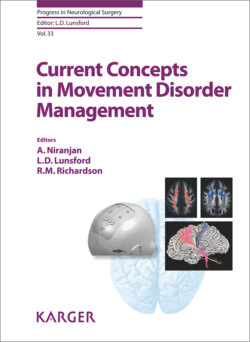Читать книгу Current Concepts in Movement Disorder Management - Группа авторов - Страница 12
The Pre Stereotactic Era
ОглавлениеThe recognition and anatomical description of motor pathways became part of medical teaching in the 19th century. The abnormal symptoms and signs of Parkinson’s disease, including tremor and rigidity, were described in 1817 by James Parkinson [2, 3]. By the 1950s, Professor Jean Seigfried in Zurich estimated that more than 20 open surgical procedures had been evaluated for movement disorders [4]. Several procedures stand out. In 1932, Bucy [5] recommended motor cortex resection or corticospinal tractotomy for athetosis, stating that motor damage was needed to improve involuntary movements. Walker [6] described sectioning the lateral two thirds of the cerebral peduncle for hemiballismus or tremor. Despite Walter Dandy’s admonition that surgery of the extrapyramidal system would result in coma, Meyers [7] described resection of the head of the caudate nucleus for Parkinsonian tremor in 1939 [7]. Although he noted subsequent success in 39 patients, the overall mortality was very high.
Further progress awaited a rather unique outcome described in a Parkinson’s patient by Irving Cooper in 1951. In the process of performing the pedunculotomy operation recommended by Earl Walker, Cooper inadvertently occluded the anterior choroidal artery [8]. The resultant distal basal ganglia infarct resulted in a significant improvement in the patient’s contralateral tremor and rigidity. Advocacy of this operation in subsequent patients abated after significant variability in the resultant infarct led to some patients suffering profound complications. The early autopsy studies persuaded Cooper and others that a more precise method of deep brain lesion creation could provide the efficacy and safety required to advance movement disorder surgery. Cooper used a variety of methods to make deep brain lesions, including alcohol, balloons, and eventually cryosurgery [9]. Alternative options were considered – ones that did not simply replace one group of symptoms with more profound signs, such as motor paralysis.
